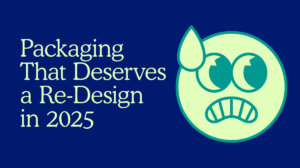What drove Newell Rubbermaid to consolidate design under one roof?
Product-driven brands create differentiation in the marketplace through innovation and design thinking, which today are table stakes in both buzz and practice, but are still the linchpins for outselling their competitors and gaining market share. However, to really make an impact, it’s developing a sound understanding of a company’s loyalists, evangelists and advocates that is the key to successful product development. It’s no wonder then that big brands are investing major dollars in design and innovation – both internally and externally – to build the most comprehensive brands for their consumers to experience.
Just last week, Newell Rubbermaid announced plans to open a huge innovation center in Kalamazoo, Michigan where 15 industrial design teams will be consolidated into 1 in order to service major brands including Sharpie, Irwin Tools, Rubbermaid and Goody – 40 brands in total. The Newell Rubbermaid Design Center, located in Western Michigan University’s Business Technology and Research Park, will employ 100 industrial and graphic designers under a single roof. According to Chuck Jones, Newell Rubbermaid’s Chief Design and Research & Development Officer, “Great design and creativity is the difference between a standard product and one that is beautiful in every way—and drives consumer preference. Our brand studios and immersion labs will foster growth ideas as designers collaborate with marketing and R&D on great innovation.”
Newell Rubbermaid has had internal design teams under their brands (though scattered around the country in each brand’s location) for years, so it made me wonder what’s driving their decision to consolidate design under one roof now. Having worked in product design and branding for almost 20 years, working with Fortune 100 clients in all sorts of industries, I’ve seen both independent and collocated design studios work successfully. I’ve also seen both models fail. There’s no simple right or wrong answer to which scenario works best, but we can consider 3 questions to help determine what’s the right way to work for your company.
Is Design Thinking Part of your Culture?
First we need to be honest and take a hard look in the mirror, asking ourselves about really, how sophisticated are we as a company when it comes to Design Thinking? Design, and particularly Design Thinking, has to either be part of a company’s culture from the get go, or it has to be a top down driven culture shift from the C-level. Design Thinking must be engrained in a company’s DNA before ever considering bringing the design function in house at all, if there was never one to begin with. That said, if you bring in a change agent who instills this philosophy and creates an infrastructure through things like Innovation Centers, can be hugely successful. In our industry, the term “Innovation Center” may be a bit over-used, but for most audiences it’s still a differentiator, elevating the value of design within an organization. And when you bundle everyone together, the power of team takes over. The trick however is to make sure an in-house design center is used as an alignment tool and is part of the company culture, otherwise it can become polarizing to the other disciplines in a company. The danger is that designers could become seen as prima donnas in a company and having their own “Innovation Center” only perpetuates the “us vs. them” mentality that can happen between design, marketing, R&D and engineering. Ideally, the Innovation Center brings everyone together, teaching and instilling the Design Thinking process to all who contribute towards the growth of their brands and their supporting executions.
Do you have the infrastructure to support your vision?
In Rubbermaid’s case, the benefits of bringing design for multiple brands under one roof are many, regardless of the logistical challenge of actually pulling it off. First, there is gained efficiency in resourcing projects that allows for designers/teams to “flow to the work”, meaning that if two designers working on food storage are light, they can shift to working with another brand team on a project, bringing a fresh perspective while reducing idle time. Then, there is the “strength in numbers” concept that shows the combined strength and importance of design within the company as a whole when you have a significant number of people supporting a side of the business. But the key benefit to having everyone under one roof, is in each team member having a broader perspective on the company’s portfolio of brands, both holistically and how to affect them independently. Especially with a company like Rubbermaid, which has such a broad range of product types (food storage, garage cabinets, drinking vessels, etc). Such disparate categories still need to have a common brand DNA that transcends product type, while reinforcing the brands as a whole and are unique to themselves. This creates a brand architecture infrastructure that can be an alignment tool for the whole organization.
While consolidating design has its advantages, there are also disadvantages. For example, if there isn’t a solid infrastructure put in place for why and how Rubbermaid’s various brands will collocate, it could become a mess or remain siloed regardless. Before bringing design teams together, it’s important to think about how all the pieces will fit internally. You may have the strategy and the vision, but if the leadership and structure isn’t there, your organization risks major inefficiencies.
Can you Manage the Beast?
Successful design consolidation can require far more expertise and responsibility than managing independent studios. Great Design Thinking comes from effective leadership and culturalizing, not just codifying, best practices. So once you have that in place, how do you manage it to leverage the collective strength while not losing the magic that made each brand and each design team unique? The last thing you want to do is water down all the brands by changing the culture too much. There is a reason that many companies still have small, independently functioning design studios actually separated from their respective “motherships”. There is an authenticity to a brand that can only be developed while in isolation and introspection. How do you not lose that when you pull everything under one roof? Well, it comes back to leadership, vision and a philosophy that embraces Design Thinking, both within the design department and in the company overall.
At the end of the day, most companies experiment with consolidating design in one way or another. Whether under brands, within buildings or geographically centralizing design teams. Ultimately, the true success or failure of a consolidated approach to design will be the resulting culture that is created and the work outputted by the individuals. And if history is any guide, Chuck’s success at Whirlpool should prove beneficial for Newell Rubbermaid, its customers and consumers.
About The Author
 By Demetrius Romanos, Executive Creative Director / Managing Director L.A.
By Demetrius Romanos, Executive Creative Director / Managing Director L.A.






